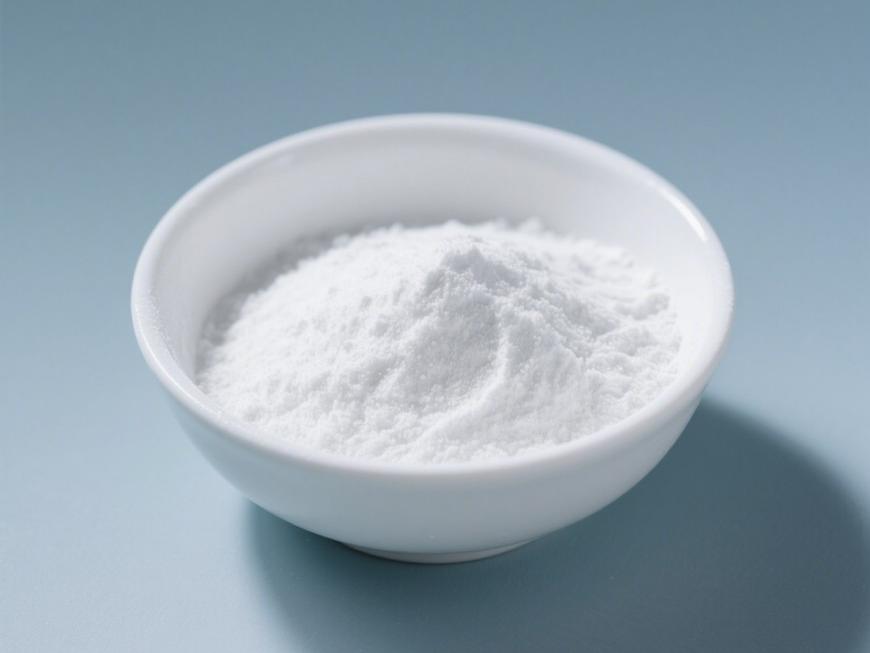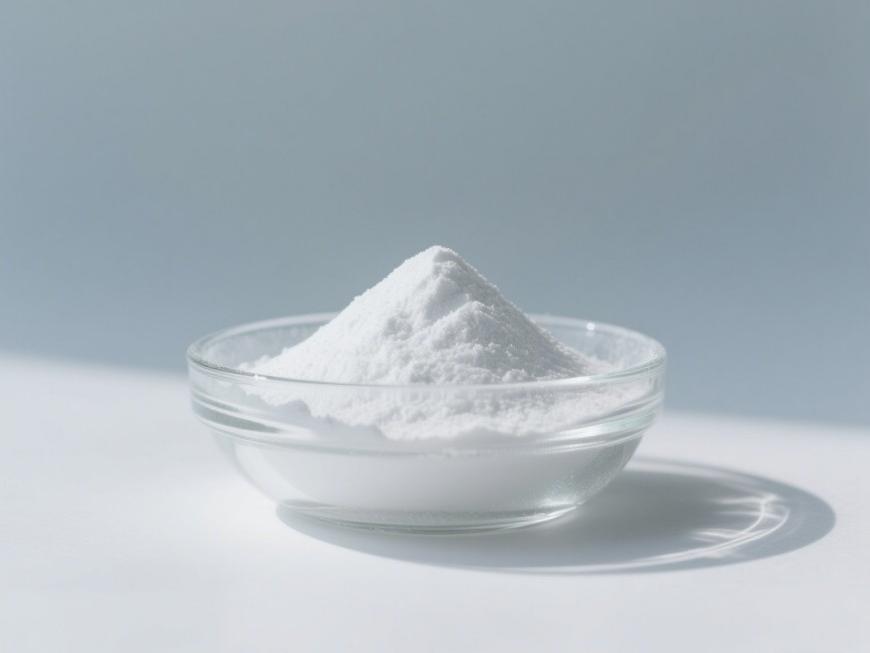What Is the Use of Plant Melatonin?
Melatonin, chemically known as N-acetyl-5-methoxytryptamine, was first discovered in the pineal gland tissue of cows in 1958. It belongs to the indole derivatives of tryptophan. Due to its ability to lighten the skin color of certain amphibians and fish, it is named melatonin [1].Initially, researchers believed that melatonin was an active substance exclusive to animals. However, in 1993, melatonin was detected in Japanese morning glory (Pharbitis nil) in Japan, confirming its presence in plants. Subsequently, melatonin was quantified in various plant species [2-7].
With the discovery of the first melatonin receptor in plants (CAND2/PMTR1) and its physiological functions, such as promoting plant growth, root development, anti-aging, and stomatal closure, melatonin has also been recognized as a new type of plant hormone [8,9]. Since the discovery of melatonin in plants, research on plant melatonin has primarily focused on endogenous content, biosynthetic pathways, and physiological functions. In light of this, this review summarizes the current status of research on plant melatonin from the three aspects mentioned above, aiming to provide some reference for the application of melatonin in plant production practices.
1. Melatonin content in plants
Endogenous melatonin levels in plants are generally higher than those in animals. On one hand, plants encounter various adverse environmental conditions during growth, and at this time, the plant body requires numerous bioactive substances, including melatonin, to enhance the plant's tolerance to stress through physiological regulatory mechanisms. On the other hand, plants can continuously produce melatonin precursors, such as tryptophan, through the shikimic acid pathway.while animals lack this metabolic pathway and must obtain melatonin from their diet [10-12].
For the quantitative detection of melatonin content in plants, commonly used methods include radioimmunoassay (RIA), high-performance liquid chromatography-electrochemiluminescence detection (HPLC-ECD) analysis, high-performance liquid chromatography-fluorescence detection (HPLC-FD) analysis, high-performance liquid chromatography-mass spectrometry (HPLC-MS) analysis,gas chromatography-mass spectrometry (GC-MS) analysis, and enzyme-linked immunosorbent assay (ELISA), among others. Based on these detection methods, melatonin has been found to be widely distributed in various plant organs such as roots, stems, flowers, leaves, seeds, and fruits; however, its content exhibits significant inter- and intra-species variations, and even different tissue parts of the same plant may show distinct differences (Table 1).
Among plants where melatonin has been quantitatively detected, some medicinal plants exhibit relatively high melatonin levels [18,22]. Additionally, compared to cucumber (Cucurbitaceae), kiwifruit (Actinidiaceae), strawberry (Rosaceae), onion (Alliaceae), and garlic (Alliaceae),melatonin levels in Poaceae plants such as rice, barley, sweet corn, oats, and tall fescue are higher [3]. Wang Jinying et al. [23] used HPLC to determine melatonin content in 132 corn and 145 rice seed samples, with results showing thatmelatonin was detected in 58 corn and 25 rice samples (≥10 ng/g), with ranges of 10–2034 ng/g and 11–264 ng/g, respectively.
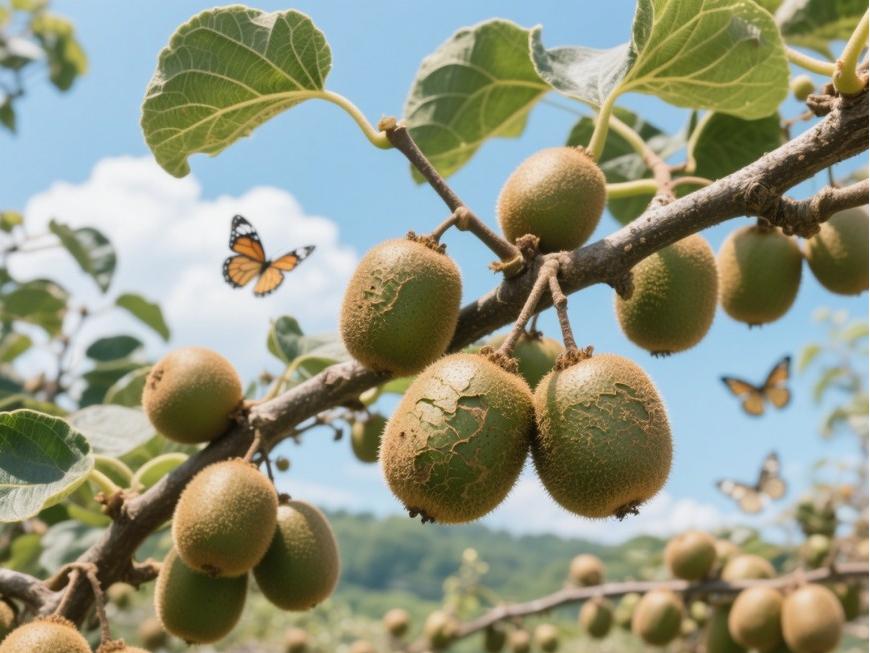
Melatonin was found to be present at higher levels in the flower bud tissues of white mandrake, but its content decreased with the development of floral organs [24]. Studies on the medicinal plant licorice revealed that melatonin was present at the highest levels in its root tissues, with its concentration increasing with the plant's developmental stage. Concurrently,melatonin levels in root tissues were highest after 3 days of high-intensity (1.13 W/m²) UVB radiation and second highest after 15 days of low-intensity (0.43 W/m²) radiation treatment [25]. Ye et al. [26] reported that after 15 days of treatment with 500 μmol/L cadmium, melatonin levels in rice stems,roots reached 21.0 ng/g and 3.0 ng/g, respectively, which were 10 times and 3 times higher than those in the control treatment. The above data indicate that melatonin levels in plants are closely related to factors such as the plant's own genetic characteristics, environmental conditions, and growth and development stages.
2. Synthesis of plant melatonin
2.1 Melatonin Synthesis Pathway
The elucidation of the melatonin synthesis pathway in plants is a hot research area in melatonin studies. Murch et al. [27] were the first to investigate the melatonin synthesis pathway in plants. They detected indoleacetic acid (IAA), tryptophan (TAM), 5-hydroxytryptophan (5-HTP), and 5-hydroxytryptamine (5-HT), which are intermediate products required in the melatonin biosynthesis process in animals. Based on these findings, it was speculated that plants and animals may share similar melatonin synthesis pathways.However, subsequent experimental studies using molecular biology and enzyme-catalyzed reaction kinetics methods revealed that the melatonin synthesis pathway in plants is far more complex than that in animals, and significant differences exist between the two (Figures 1 and 2). This suggests that the mechanisms underlying melatonin synthesis may have evolved differently in plants and animals.
Based on current research findings, in the melatonin synthesis pathway of plants,the conversion of tryptophan to 5-hydroxytryptophan is uncontested, while the final synthesis of melatonin from 5-hydroxytryptophan remains controversial. Specifically, 5-hydroxytryptophan is first acetylated to form N-acetyl-5-hydroxytryptophan,which is then catalyzed by a methyltransferase to ultimately synthesize melatonin (referred to as the NM pathway, similar to the melatonin synthesis pathway in animals) or whether 5-hydroxytryptophan is first methylated to form 5-methoxytryptophan, which is then acetylated to produce melatonin (referred to as the MN pathway) (Figure 2) [10].
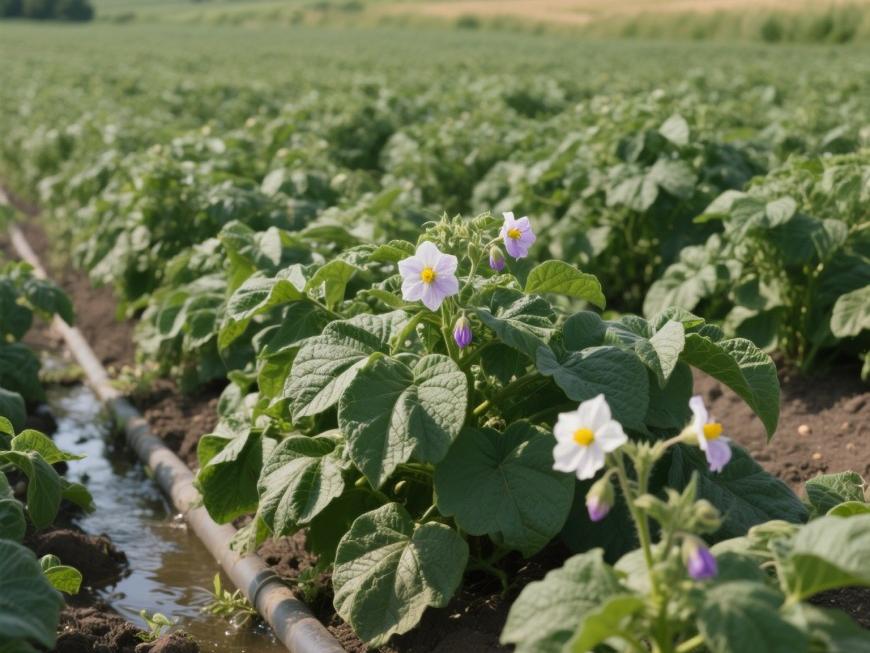
In the melatonin synthesis process of plants, the NM and MN pathways may coexist in parallel. Recent studies have shown that under normal growth conditions, melatonin synthesis in plants is dominated by the NM pathway, while under non-biotic stress conditions, the MN pathway is predominant [28]. This may be related to the presence of multiple SNAT and ASMT subtypes in plants.
2.2 Regulation of melatonin synthesis
Research on the regulation of melatonin biosynthesis in plants is still in its infancy, and the underlying mechanisms remain poorly understood. Kolár et al. [29] conducted early studies on the temporal patterns of melatonin levels in the short-day plant red-leaf amaranth, revealing that melatonin levels exhibited circadian rhythms similar to those observed in animals, suggesting that light inhibits melatonin biosynthesis in plants.However, the findings of two research teams led by Murch [27] and Tan [30] indicate that light does not inhibit melatonin biosynthesis in plants, and that the rate of melatonin biosynthesis is positively correlated with light intensity. In addition to light intensity, non-biotic stress factors such as light wavelength, high temperature, low temperature, drought, high salinity, lead, and cadmium are also major regulatory factors for melatonin biosynthesis in plants [31-34].
2.3 Sites of melatonin biosynthesis
Melatonin, as a hydrophilic and lipophilic small molecule, can freely transport between tissue cells; on the other hand, the biosynthesis of plant melatonin is significantly influenced by external environmental conditions, which increases the difficulty of locating the sites of melatonin biosynthesis. Since chloroplasts and mitochondria are the primary sites for reactive oxygen species (ROS) production [35,36], it is speculated that chloroplasts and mitochondria may be the primary sites for melatonin biosynthesis in plants.
The findings of Byeon et al. [37] provided preliminary evidence supporting this hypothesis. They discovered that SNAT, one of the key enzymes in the melatonin biosynthetic pathway, is localized in chloroplasts, while ASMT is present in the cytoplasm.Further studies revealed that specific overexpression of COMT in chloroplasts significantly increased endogenous melatonin levels, whereas overexpression of COMT in the cytoplasm did not cause significant changes in melatonin levels [38], indicating that the synergistic action of COMT and SNAT in chloroplasts plays a crucial role in plant melatonin biosynthesis.
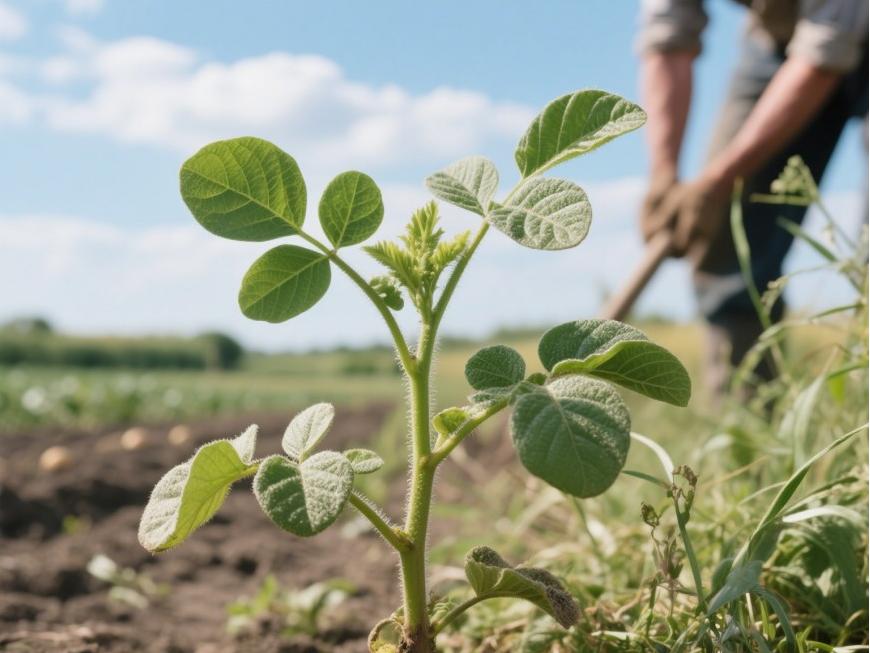
The most compelling evidence supporting the role of chloroplasts as the site of melatonin biosynthesis in plants comes from the findings of Zheng et al. [39], who added 5-hydroxytryptophan to isolated and purified apple chloroplasts, resulting in melatonin production in a dose-dependent manner.Recent subcellular localization experiments have further confirmed that chloroplasts may be the site of melatonin biosynthesis [40,41].In addition to chloroplasts, mitochondria have also been preliminarily confirmed by experimental results as sites of melatonin synthesis in plants. Wang et al. [42] found that isolated apple mitochondria can produce melatonin, and the apple SNAT subtype MzSNAT5 was localized in the mitochondria of Arabidopsis protoplasts and apple callus cells.
3. Physiological functions of plant melatonin
On the one hand, melatonin itself possesses strong reducing capacity, capable of scavenging free radicals generated within plants and maintaining the metabolic balance of ROS within cells; on the other hand, tryptophan serves as a common precursor for the biosynthesis of melatonin and IAA, and both play similar regulatory roles in plant growth and development [43-45]. Previous studies have shown that melatonin, as an important signaling molecule and antioxidant, participates in regulating plant growth and development as well as responses to various environmental stresses.
3.1 Melatonin regulation of plant growth and development
Murch et al. [46,47] found in early studies that changes in endogenous melatonin concentrations in plants affect root development, cell mitosis, and the formation of mitotic spindles. Based on this finding, they proposed the hypothesis that melatonin is a potential plant growth regulator.Subsequent experiments have confirmed this hypothesis, showing that melatonin is widely involved in regulating plant flowering, fruit ripening, photosynthesis, leaf senescence, root morphology, and other growth and development processes [35], with its effects similar to or synergistic with those of IAA.Melatonin promotes the elongation of the hypocotyl in lupine, with an activity equivalent to 63% of IAA [20]. In a similar study, it was found that melatonin promotes the growth of the coleoptile sheath in monocotyledonous plants such as oats, wheat, barley, and chickweed,with an activity of 10% (oats) to 55% (barley) of IAA.
Additionally, similar to IAA, melatonin exhibits concentration-dependent inhibitory effects on root growth in the aforementioned plants, with an inhibitory effect of 56% (chickweed) to 86% (wheat) of IAA [16].
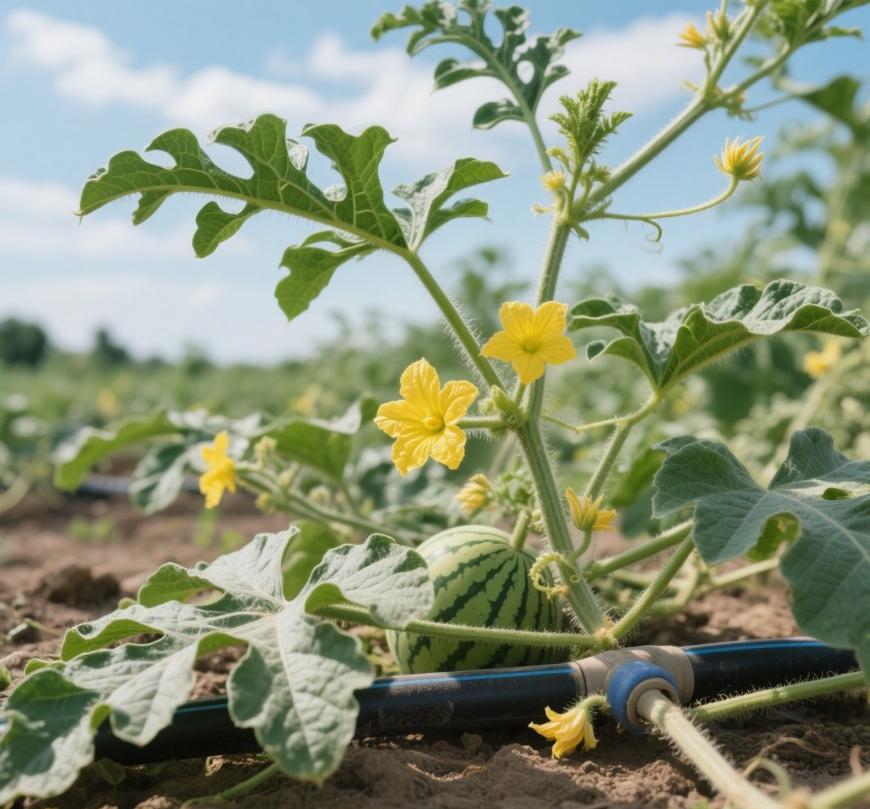
Studies have shown that melatonin at concentrations of 10⁻⁹ to 10⁻⁶ mol·L⁻¹ can act as an IAA analog to promote the growth of the primary root system of Arabidopsis.Further analysis revealed that melatonin and IAA treatment-induced gene expression changes were moderately correlated, and most genes regulated by IAA were also regulated by melatonin. This suggests that melatonin and IAA co-regulate a similar subset of genes, leading to the inference that melatonin promotes Arabidopsis primary root growth in an IAA-dependent manner [48].In rice, overexpression of the sheep 5-hydroxytryptophan-N-acetyltransferase gene resulted in enhanced root development and increased adventitious root numbers in transgenic plants. Additionally, exogenous melatonin treatment promoted root growth in wild-type rice plants under continuous light conditions [49].
Furthermore, studies in Brassica rapa [50], cherry [51], sunflower [52], tomato [53], and some monocotyledonous plants [16,54] have shown that melatonin's regulatory effect on plant growth and development is concentration-dependent.At a concentration of 0.1 μmol.L-1, melatonin promotes root growth in rapeseed, while at 100 μmol.L-1, it exhibits an inhibitory effect. Concurrently, low-concentration melatonin treatment leads to an increase in endogenous IAA levels,suggesting that the promoting effect of low melatonin concentrations is related to the changes in endogenous IAA levels [50]. Hernández Ruiz et al. [16] found that the optimal melatonin concentration for promoting root growth in monocotyledonous plants such as oats, wheat, barley, and chickweed was 10⁻⁷ mol/L.In rice, melatonin treatment at concentrations of 10–50 μmol.L-1 inhibited hypocotyl growth but promoted lateral root formation and development [54].
Coating soybean seeds with a coating agent containing 50 or 100 μmol.L-1 melatonin significantly promoted plant growth and development,increased soybean yield and fatty acid content [55]. Zhong et al. [56] found that exogenous melatonin treatment promoted the growth and development of grape seedlings by enhancing the photosynthetic performance of leaf blades and increasing plant biomass. Additionally, exogenous melatonin treatment also increased the yield of corn, mung beans, and cucumbers [57–59].Melatonin primarily exerts its functions by regulating the transcription of numerous genes involved in cell division, photosynthesis, carbohydrate metabolism, fatty acid biosynthesis, and ascorbic acid metabolism [60].
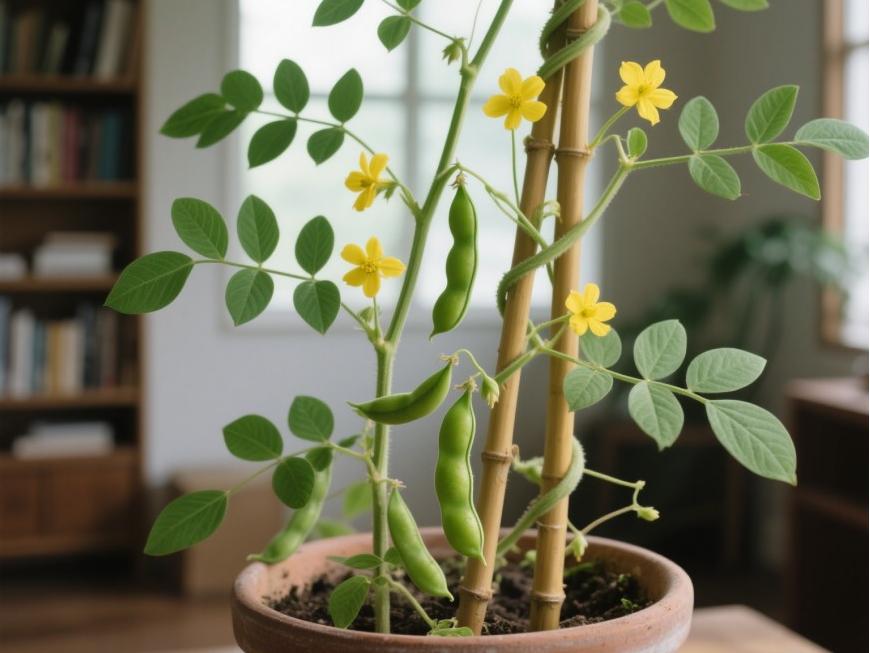
Park et al. [61] measured melatonin levels in three different growth stages of rice—pre-flowering, flowering, and post-flowering—and found that melatonin levels in the panicle (flower) were six times higher than those in the flag leaf, suggesting that melatonin may be involved in the development of floral organs.Studies on the effects of exogenous melatonin on fruit ripening have primarily focused on the interaction between melatonin and ethylene. Early studies found that after pre-treatment with 50 μmol.L-1 melatonin, parameters related to fruit ripening, such as lycopene levels, fruit softening degree, and enzymes associated with ethylene signaling and biosynthesis, showed significant changes in tomatoes.corresponding proteomics analysis indicated that exogenous melatonin treatment increased the abundance of proteins associated with fruit ripening-related pathways and anthocyanin accumulation pathways [62,63].Additionally, exogenous melatonin treatment reduced the weight loss rate and rot rate of peach fruits while maintaining fruit firmness, soluble solids content, and ascorbic acid levels, thereby effectively delaying the senescence and decay of peach fruits from two different genetic backgrounds [64]. Melatonin treatment during fruit ripening increased soluble sugar content and single fruit weight in pear fruits [65].
Plant leaf senescence is a programmed form of cell death primarily leading to the degradation of macromolecules, including chlorophyll [66]. Under drought conditions, exogenous melatonin treatment can inhibit the expression of apple senescence-related gene 12 (SAG12) and the polyphenol oxidase gene (PAO) [67].Melatonin pretreatment significantly slows down the aging process of barley leaves, with the highest chlorophyll content observed in leaves treated with 1 mmol/L melatonin [68]. Liang et al. [69] found in rice that melatonin delays leaf aging by inhibiting chlorophyll degradation and the expression of aging-related genes.Proteomics analysis revealed that the expression levels of aging-related proteins were reduced after melatonin pretreatment [57]. In perennial ryegrass, exogenous melatonin treatment inhibited the transcription of aging-related genes LpSAG12.1 and Lph36, thereby delaying high-temperature stress-induced leaf senescence [70].
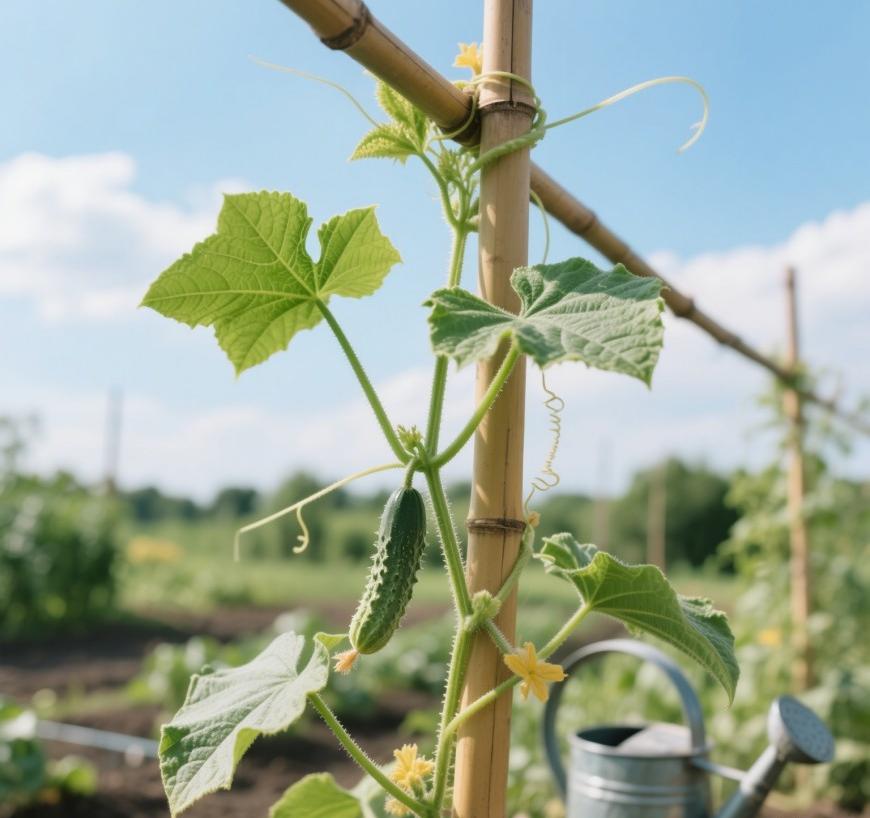
In addition to delaying leaf senescence, melatonin appears to enhance plant photosynthetic efficiency through an unconventional biostimulatory pathway. Long-term application of 100 μmol. L-1 melatonin to growth soil improved the photochemical efficiency of photosystem II in apples under weak light conditions, alleviated drought stress-induced inhibition of photosynthesis,while maintaining higher CO₂ assimilation capacity and stomatal conductance in plant leaves [71]. Pretreatment with 0.1 mmol/L melatonin increased net photosynthetic rate, transpiration rate, stomatal conductance, photosystem II quantum efficiency, electron transport rate, and maximum photochemical efficiency (Fv/Fm) in tomato plants [72].
3.2 Role of plant melatonin in responses to biotic stress
Melatonin significantly enhances plant tolerance to biotic stress. Given its status as an environmentally friendly molecule, it is considered the most economical and green alternative for inducing plants to resist biotic stress.Exogenous melatonin exhibits certain effects against fungal-induced diseases. Treatment with melatonin at concentrations of 0.05–0.5 mmol/L can enhance resistance to brown spot disease by regulating the activity of antioxidant and defense-related enzymes in apples [73]. Melatonin can also mitigate damage caused by fungal infections to crops such as potatoes, cotton, and white lupins [74-76]. Different concentrations of exogenous melatonin can inhibit the growth of fungal pathogens such as Botrytis, Fusarium, and Fusarium [76].
In terms of its mechanism of action, melatonin primarily helps plants resist fungal infections, reduce lesions, and inhibit pathogen spread, ultimately mitigating the damage caused by diseases. Arabidopsis thaliana-Pseudomonas syringae tomato pathogenic strain DC3000 (Pst DC3000) is the most widely used model in studies of plant-pathogen interactions [77].
Exogenous melatonin pretreatment at certain concentrations enhances the resistance of Arabidopsis and tobacco to Pst DC3000 [78,79]. Lee et al. [80] found that inactivation of serotonin-N-acetyltransferase significantly reduced endogenous melatonin levels in Arabidopsis,resulting in increased susceptibility of plants to Pst DC3000. Therefore, melatonin can enhance plant tolerance to bacterial diseases.

Compared to fungal and bacterial diseases, viral infections in plants are more difficult to control once they occur. Zhao et al. [81] first investigated the role of melatonin in plant-virus interactions, finding that exogenous melatonin application significantly inhibited viral infection of tobacco seedlings. Additionally, exogenous melatonin pretreatment reduced the incidence of viral diseases in rice [82].With the deepening of research on melatonin-mediated plant disease resistance mechanisms, melatonin could provide new strategies for the prevention and control of plant viral diseases.
In addition to phenotypic identification, recent analyses of gene expression have provided strong evidence for melatonin's involvement in regulating plant responses to abiotic stress.Exogenous melatonin treatment or overexpression of melatonin synthesis-related genes can induce the expression of disease-related (PR) genes such as PR1, PR5, NPR1, and PDF1.2, as well as activate mitogen-activated protein kinases (MAPKs) and other disease-resistant proteins,thereby enhancing plant disease resistance, indicating that melatonin is an efficient defense agent against pathogens in plants [78,83-85].
In addition to pathogens, insect pests are another major biotic stress that plants face during growth. Plant-derived secondary metabolites act as antagonists of insect juvenile hormone to defend against insect predation [86].It has been reported that dopamine, which has a similar structure to melatonin, plays an important role in plant defense against herbivores [87], suggesting that melatonin may also exert similar defensive effects [88].
3.3 Role of plant melatonin in responses to abiotic stress
Under normal growth conditions, the production and removal of ROS in plant cells are in dynamic equilibrium. When plants are exposed to adverse environmental factors such as drought, high salinity, extreme temperatures, heavy metals, and ultraviolet radiation, this equilibrium is disrupted, leading to oxidative stress damage in plant cells [89-91].To eliminate ROS within the body, plants have evolved an efficient enzymatic and non-enzymatic antioxidant defense system to protect cells from or mitigate damage caused by oxidative stress.

Melatonin is currently the strongest endogenous free radical scavenger with antioxidant activity. It is estimated that a single melatonin molecule can eliminate 10 free radicals through a cascade reaction,while classic antioxidants typically only eliminate one free radical per molecule [92]. Therefore, it is inferred that melatonin's primary function in organisms is as an antioxidant to eliminate various ROS and reactive nitrogen species (RNS), thereby protecting plants from oxidative stress [92-95].
Melatonin may control the burst of hydrogen peroxide during non-biotic stress responses in plants by directly scavenging excess ROS, enhancing antioxidant enzyme activity, and improving the ascorbic acid-glutathione (AsA-GSH) cycle capacity [67].Exogenous melatonin treatment enhances antioxidant enzyme activity in apples, grapes, corn, sunflowers, tomatoes, and wheat, while reducing the concentrations of superoxide, hydrogen peroxide, and malondialdehyde [59,67,72,96-99].Additionally, exogenous melatonin treatment reduces the accumulation of oxidized proteins in plants, accelerates the occurrence of autophagy induced by oxidative stress, and alleviates photooxidative damage [100].
4. Conclusion and Outlook
Since the discovery of melatonin in plants, its diverse physiological functions and significant potential applications have attracted increasing attention in plant melatonin research. However, compared with other plant hormones, there are still many unresolved issues in plant melatonin research.For example, while the interactions between plant melatonin and other hormones have been studied directly or indirectly, the signal transduction models underlying these interactions remain unclear. Therefore, further investigation into the mechanisms by which melatonin coordinates with other plant hormones to regulate plant growth and development and responses to abiotic stress is a key direction for future research on plant melatonin.

By elucidating the interactions between melatonin and other hormones, we can also gain insights into the molecular mechanisms of melatonin signaling and its role as a plant growth regulator. Additionally, how plants perceive melatonin signals and how downstream signal transduction regulates plant responses to stress at physiological and metabolic levels remain unresolved questions.However, the discovery of Arabidopsis CAND2/PMTR1 as melatonin signal transduction receptors has laid a foundation for further research into melatonin signal transduction in plants [8].
Melatonin is widely distributed in various plant tissues; however, it remains unclear whether all plant organs possess melatonin synthesis capabilities. The mechanisms and pathways of melatonin transport within plants require further investigation.The heterologous overexpression of melatonin synthesis-related genes can significantly increase the endogenous melatonin levels in plants, while transgenic plants exhibit enhanced tolerance to various abiotic stresses [40,49,101-110].In the future, genetic engineering could serve as an important means to increase the endogenous melatonin content in crops, thereby promoting plant growth and development, enhancing tolerance to abiotic stress, and ultimately improving crop yields.
Reference
[1]LERNER A B,CASE J D,TAKAHASHI Y,et al.Isolation of melatonin,the pineal gland factor that lightens melanocytes1[J]. Journal of American Chemical Society,1958,80( 10) :2587.
[2]DUBBELS R,REITER R J,KLENKE E,et al.Melatonin in edible plants identified by radioimmunoassay and by high performance liquid chromatography-mass spectrometry[J].Journal of Pineal Research,1995,18( 1):28-31.
[3]HATTORI A,MIGITAKA H,LIGO M,et al.Identification of melatonin in plants and its effects on plasma melatonin levels and binding to melatonin receptors in vertebrates[J].Biochemistry and Molecular Biology International,1995,35 (3):627-634.
[4]POSMYK M M,JANAS K M.Melatonin in plants[J].Acta Physiologiae Plantarum,2009,31 ( 1):1-11.
[5]MURCH S J,HALL B A,LE C H,et al.Changes in the levels of indoleamine phytochemicals during véraison and ripening of wine grapes[J].Journal of Pineal Research,2009,49( 1):95-100.
[6]TAN D X,HARDELAND R,MANCHESTER L C,et al.Functional roles of melatonin in plants,and perspectives in nutritional and agricultural science[J].Journal of Experimental Botany,2012,63 (2):577-597.
[7]FERNANDEZ-MAR M I,MATEOS R,GARCIA-PERILLA M C,et al.Bioactive compounds in wine: resveratrol,hydroxytyrosol and melatonin:a of review[J].Food Chemistry,2012,130(4) :797-813.
[8]WEI J,LI D X,ZHANG J R,et al.Phytomelatonin receptor PMTR1-mediated signaling regulates stomatal closure in Arabidopsis thaliana[J].Journal of Pineal Research,2018,65 (2):e12500.
[9]ARNAO M B,HERNáNDEZ RUIZ J H.Melatonin:A new plant hormone and / or a plant master regulator? [J].Trends in Plant Science,2019,24( 1):38-48.
[10]TAN X D,REITER R J.An evolutionary view of melatonin synthesis and metabolism related to its biological functions in plants [J].Journal of Experimental Botany,2020,71 ( 16) :4677-4689.
[11]TAN D X,HARDELAND R,BACK K,et al.On the significance of an alternate pathway of melatonin synthesis via 5-methoxytryptamine:comparisons across species[J].Journal of Pineal Research,2016,61 ( 1):27-40.
[12]PEREZ-LLORCA M,MUNOZ P,Müller M,et al.Biosynthesis,metabolism and function of auxin,salicylic acid and melatonin in climacteric and non-climacteric fruits[J].Frontiers in Plant Science,2019,10:136.
[13]KOCA U,DNMEZ C A,BOR E.Melatonin in edible and non-edible plants[J].Turkish Journal of Pharmaceutical Sciences,2017,14( 1) :75-83.
[14]MANCHESTER L C,TAN D X,REITER R J,et al.High levels of melatonin in the seeds of edible plants:possible function in germ tissue protection[J].Life Sciences,2000,67(25):3023-3029.
[15]ZOHAR R,IZHAKI I,KOPLOVICH A,et al.Phytomelatonin in the leaves and fruits of wild perennial plants[J].Phytochemistry Letters,2011,4(3):222-226.
[16]HERNNDEZ RUIZ J,CANO A,ARNAO M B.Melatonin acts as a growth-stimulating compound in some monocot species[J].Journal of Pineal Research,2005,39(2):137-142.
[17]CHEN G,HUO Y,TAN D X,et al.Melatonin in Chinese medicinal herbs[J].Life Sciences,2003,73 ( 1):19-26.
[18]REITER R J,MANCHESTER L C,TAN D X.Melatonin in walnuts:influence on levels of melatonin and total antioxidant capacity of blood[J].Nutrition,2005,21 (9):920-924.
[19]HERNNDEZ RUIZ J,ARNAO M B.Melatonin stimulates the expansion of etiolated lupin cotyledons[J].Plant Growth Regulation,2008,55 ( 1):29-34.
[20]HERNNDEZ RUIZ J,CANO A,ARNAO M B.Melatonin:a growth-stimulating compound present in lupin tissues[J].
Planta,2004,220( 1):140-144.
[21]GONZALEZ-GOMEZ D,LOZANO M,FERNANDEZ-LEON M F,et al.Detection and quantification of melatonin and serotonin in eight sweet cherry cultivars ( Prunus avium L.) [J].European Food Research and Technology,2009,229 (2): 223-229.
[22]MURCH S J,SAXENA P K.Modulation of mineral and fatty acid profiles during thidiazuron mediated somatic embryogenesis in peanuts ( Arachis hypogaea L.) [J].Journal of Plant Physiology,1977,151 (3):358-361.
[23] Wang, J., Jiang, C., Li, S., et al. Determination of melatonin and analysis of melatonin content in corn and rice seeds [J]. Chinese Journal of Agricultural Science, 2009, 25 (17): 20-24.
[24]MURCH S J,ALAN A R,CAO J,et al.Melatonin and serotonin in flowers and fruits of Datura metel L[J].Journal of Pineal Research,2009,47(3):277-283.
[25]AFREEN F,ZOBAYED S M A,KOZAI T.Melatonin in Glycyrrhiza uralensis:response of plant roots to spectral quality of light and UV-B radiation[J].Journal of Pineal Research,2006,41 (2):108-115.
[26]YE T T,HAO Y H,YU L,et al.A simple,rapid method for determination of melatonin in plant tissues by UPLC coupled with high resolution orbitrap mass spectrometry[J].Frontiers in Plant Science,2017,8:64.
[27]MURCH S J,KRISHNARAJ S,SAXENA P K.Tryptophan is a precursor for melatonin and serotonin biosynthesis in in vitro regenerated St.John's wort ( Hypericum perforatum L.cv.Anthos) plants[J].Plant Cell Reports,2000,19(7):698 704.
[28]YE T T,YIN X M,YU L,et al.Metabolic analysis of the melatonin biosynthesis pathway using chemical labeling coupled with liquid chromatography-mass spectrometry[J].Journal of Pineal Research,2019,66( 1):e12531.
[29]KOLR J,JOHNSON C H,MACHCKOV H.Presence and possible role melatonin in a short-day flowering plant,Chenopodium rubrum[J].Advances in Experimental Medicine and Biology,1999,460:391-393.
[30]TAN D X,MANCHESTER L C,DI MASCIO P,et al.Novel rhythms of N1-acetyl-N2-formyl-5-methoxykynuramine and its precursor melatonin in water hyacinth:importance for phytoremediation[J].FASEB Journal,2007,21 (8):1724 1729.
[31]ZHANG K,CUI H,CAO S,et al.Overexpression of CrCOMT from Carex rigescens increases salt stress and modulates melatonin synthesis in Arabidopsis thaliana [J].Plant Cell Reports,2019,38( 12):1501-1514.
[32]ARNAO M B,HERNNDEZ RUIZ J.Chemical stress by different agents affects the melatonin content of barley roots[J].Journal of Pineal Research,2009,46(3):295-299.
[33]TAL O,HAIM A,HAREL O,et al.Melatonin as an antioxidant and its semi-lunar rhythm in green macroalga Ulva sp[J].Journal of Experimental Botany,2011,62(6):1903-1910.
[34]REITER R J,TAN D X,ZHOU Z,et al.Phytomelatonin:assisting plants to survive and thrive[J].Molecules,2015,20 (4):7396-7437.
[35]ZHANG Z X,ZHANG Y.Melatonin in plants:what we know and what we don't[J].Food Quality and Safety,2021,5:1 9.
[36]APEL K,HIRT H.Reactive oxygen species:metabolism,oxidative stress,and signal transduction[J].Annual Review of Plant Biology,2004,55 ( 1):373-399.
[37]BYEON Y,LEE H Y,LEE K,et al.Cellular localization and kinetics of the rice melatonin biosynthetic enzymes SNAT and ASMT[J].Journal of Pineal Research,2014,56( 1):107-114.
[38]CHOI G H,LEE H Y,BACK K.Chloroplast overexpression of rice caffeic acid O-methyltransferase increases melatonin production in chloroplasts via the 5-methoxytryptamine pathway in transgenic rice plants[J].Journal of Pineal Research, 2017,63 ( 1):e12412.
[39]ZHENG X D,TAN D X,ALLAN A C,et al.Chloroplastic biosynthesis of melatonin and its involvement in protection of plants from salt stress[J].Scientific Reports,2017,7:41236.
[40]YU Y H,BIAN L,JIAO Z L,et al.Molecular cloning and characterization of a grapevine ( Vitis vinifera L.) serotonin N acetyltransferase ( VvSNAT2 ) gene involved in plant defense[J].BMC Genomics,2019,20( 1):880.
[41]WANG X Y,ZHANG H J,XIE Q,et al.SlSNAT interacts with HSP40,a molecular chaperone,to regulate melatonin biosynthesis and promote thermotolerance in tomato[J].Plant and Cell Physiology,2020,61 (5):909-921.
[42] WANG L ,FENG C ,ZHENG X ,et al. Plant mitochondria synthesize melatonin and enhance the tolerance of plants to drought stress[J].Journal of Pineal Research,2017,63 (3):e12429.
[43]EDGERTON M D,TROPSHA A,JONES A M.Modeling the auxin-binding site of auxin-binding protein-1 of maize[J].
Phytochemistry,1994,35 (5):1111-1123.
[44]ARNAO M ,HERNNDEZ RUIZ J.The physiological function of melatonin in plants[J].Plant Signaling & Behavior, 2006,1 (3):89-95.
[45]SHI H T,REITER R J,TAN D X,et al.INDOLE-3-ACETIC ACID INDUCIBLE 17 positively modulates natural leaf senescence through melatonin-mediated pathway in Arabidopsis [J].Journal of Pineal Research,2015,58( 1):26-33.
[46]MURCH S J,CAMPBELL S S,SAXENA P K.The role of serotonin and melatonin in plant morphogenesis:regulation of auxin-induced root organogenesis in in vitro-cultured explants of St John's wort ( Hypericum perforatum L.) [J].In Vitro Cellular &Development Biology-Plant,2001,37(6):786-793.
[47]MURCH S J ,SAXENA P K. Melatonin:a potential regulator of plant growth and development? [J]. In Vitro Cellular &Development Biology-Plant,2002,38(6):531-536.
[48]YANG L,YOU J,LI J Y,et al.Melatonin promotes Arabidopsis primary root growth in an IAA dependent manner[J].
Journal of Experimental Botany,2021,72( 15):5599-5611.
[49]PARK S,BACK K.Melatonin promotes seminal root elongation and root growth in transgenic rice after germination[J].Journal of Pineal Research,2012,53 (4):385-389.
[50]CHEN Q,QI W B,REITER R J,et al.Exogenously applied melatonin stimulates root growth and raises endogenous IAA in roots of etiolated seedling of Brassica juncea [J].Journal of Plant Physiology,2009,166(3):324-328.
[51]SARROPOULOU V N,THERIOS I N,DIMASSI-THERIOU K N.Melatonin promotes adventitious root regeneration in in vitro shoot tip explants of the commercial sweet cherry rootstocks CAB-6P ( Prunus cerasus L.) ,Gisela 6 ( P.cerasus × P.canescens) ,and MxM 60 (P.avium × P.mahaleb) [J].Journal of Pineal Research,2012,52( 1):38-46.
[52]MUKHERJEE S,DAVID A,YADAV S,et al.Salt stress-induced seedling growth inhibition coincides with differential distribution of serotonin and melatonin in sunflower seedling roots and cotyledons[J].Physiologia Plantarum,2014,152 (4): 714-728.
[53]WEN D,GONG B,SUN S S,et al.Promoting roles of melatonin in adventitious root development of Solanum lycopersicum L.by regulating auxin and nitric oxide signaling[J].Frontiers in Plant Science,2016,7:718.
[54]LIANG C,LI A,YU H,et al.Melatonin regulates root architecture by modulating auxin response in rice[J].Frontiers in Plant Science,2017,8:134.
[55]WEI W,LI Q T,CHU Y N,et al.Melatonin enhances plant growth and abiotic stress tolerance in soybean plants[J].Journal of Experimental Botany,2015,66(3):695-707.
[56]ZHONG L S,LIN L L,YANG L,et al.Exogenous melatonin promotes growth and sucrose metabolism of grape seedlings[J].
PLoS One,2020,15 (4):e0232033.
[57]JANAS K M,POSMYK M M.Melatonin,an underestimated natural substance with great potential for agricultural application [J].Acta Physiologiae Plantarum,2013,35 ( 12):3285-3292.
[58]WANG L Y,LIU J L,WANG W X,et al.Exogenous melatonin improves growth and photosynthetic capacity of cucumber under salinity-induced stress[J].Photosynthetica,2016,54( 1):19-27.
[59]YE J,WANG S W,DENG X P,et al.Melatonin increased maize ( Zea mays L.) seedling drought tolerance by alleviating drought-induced photosynthetic inhibition and oxidative damage[J].Acta Physiologiae Plantarum,2016,38(2):48.
[60]WANG Y P,REITER R J,CHAN Z L.Phytomelatonin:a universal abiotic stress regulator[J].Journal of Experimental Botany,2018,69(5):963-974.
[61]PARK S,LE T N N,BYEON Y,et al.Transient induction of melatonin biosynthesis in rice ( Oryza sativa L.) during the reproductive stage[J].Journal of Pineal Research,2013,55 ( 1):40-45.
[62]SUN Q Q,ZHANG N,WANG J F,et al.Melatonin promotes ripening and improves quality of tomato fruit during postharvest life[J].Journal of Experimental Botany,2015,66(3):657-668.
[63]SUN Q Q,ZHANG N,WANG J F,et al.A label-free differential proteomics analysis reveals the effect of melatonin on promoting fruit ripening and anthocyanin accumulation upon postharvest in tomato[J].Journal of Pineal Research,2016,61 (2):138-153.
[64]GAO H,ZHANG Z K,CHAI H K,et al.Melatonin treatment delays postharvest senescence and regulates reactive oxygen species metabolism in peach fruit[J].Postharvest Biology and Technology,2016,118:103-110.
[65]LIU J L,YUE R R,SI M,et al.Effects of exogenous application of melatonin on quality and sugar metabolism in'Zaosu' pear fruit[J].Journal of Plant Growth Regulation,2019,38(3):1161-1169.
[66]LIANG C Z,WANG Y Q,ZHU Y N,et al.OsNAP connects abscisic acid and leaf senescence by fine-tuning abscisic acid biosynthesis and directly targeting senescence-associated genes in rice[J]. Proceedings of the National Academy of Sciences,2014,111 (27):10013-10018.
[67]WANG P,SUN X,LI C,et al.Long-term exogenous application of melatonin delays drought-induced leaf senescence in apple[J].Journal of Pineal Research,2013,54(3):292-302.
[68]ARNAO M B,HERNáNDEZ RUIZ J.Protective effect of melatonin against chlorophyll degradation during the senescence of barley leaves[J].Journal of Pineal Research,2009,46:58-63.
[69]LIANG C,ZHENG G,LI W,et al.Melatonin delays leaf senescence and enhances salt stress tolerance in rice[J].Journal of Pineal Research,2015,59( 1):91-101.
[70]ZHANG J,SHI Y,ZHANG X Z,et al.Melatonin suppression of heat-induced leaf senescence involves changes in abscisic acid and cytokinin biosynthesis and signaling pathways in perennial ryegrass ( Lolium perenne L.) [J].Environmental and Experimental Botany,2017,138:36-45.
[71]WANG P,SUN X,CHANG C,et al.Delay in leaf senescence of Malus hupehensis by long-term melatonin application is associated with its regulation of metabolic status and protein degradation[J].Journal of Pineal Research,2013,55 (4):424 434.
[72]LIU J L,WANG W X,WANG L Y,et al.Exogenous melatonin improves seedling health index and drought tolerance in tomato[J].Plant Growth Regulation,2015,77(3):317-326.
[73]YIN L H,WANG P,LI M J,et al.Exogenous melatonin improves Malus resistance to Marssonina apple blotch[J].Journal of Pineal Research,2013,54(4):426-434.
[74]ZHANG S M.ZHENG X Z,REITER R J,et al.Melatonin attenuates potato late blight by disrupting cell growth,stress tolerance,fungicide susceptibility and homeostasis of gene expression in Phytophthora infestans [J]. Frontiers in Plant Science,2017,8:1993.
[75]LI C,HE Q L,ZHANG F,et al.Melatonin enhances cotton immunity to Verticillium wilt via manipulating lignin and gossypol biosynthesis[J].Plant Journal,2019,100(4):784-800.
[76]ARNAO M B,HERNANDEZ RUIZ J.Functions of melatonin in plants:a review[J].Journal of Pineal Research,2015, 59(2):133-150.
[77]ARNAO M B,HERNNDEZ RUIZ J.Melatonin and its relationship to plant hormones[J].Annals of Botany,2018,121 (2):195-207.
[78] LEE H Y ,BYEON Y ,BACK K. Melatonin as a signal molecule triggering defense responses against pathogen attack in Arabidopsis and tobacco[J].Journal of Pineal Research,2014,57(3):262-268.
[79]SHI H T,CHEN Y H,TAN D X,et al.Melatonin induces nitric oxide and the potential mechanisms relate to innate immunity against bacterial pathogen infection in Arabidopsis[J].Journal of Pineal Research,2015,59( 1):102-108.
[80]LEE H Y,BYEON Y,TAN D X,et al.Arabidopsis serotonin N-acetyltransferase knockout mutant plants exhibit decreased melatonin and salicylic acid levels resulting in susceptibility to an avirulent pathogen[J].Journal of Pineal Research,2015, 58(3):291-299.
[81]ZHAO L,CHEN L,GUN P,et al.Exogenous application of melatonin improves plant resistance to virus infection[J].Plant Pathology,2019,68(7):1287-1295.
[82]LU R F,LIU Z Y,SHAO Y D,et al.Melatonin is responsible for rice resistance to rice stripe virus infection through a nitric oxide-dependent pathway[J].Virology Journal,2019,16( 1):141.
[83]YUAN S,HUANG Y H,LIU S J,et al.RNA-seq analysis of overexpressing ovine AANAT gene of melatonin biosynthesis in switchgrass[J].Frontiers in Plant Science,2016,7:1289.
[84]BYEON Y,PARK S,KIM Y S,et al.Microarray analysis of genes differentially expressed in melatonin-rich transgenic rice expressing a sheep serotonin N-acetyltransferase[J].Journal of Pineal Research,2013,55 (4):357-363.
[85]WEEDA S,ZHANG N,ZHAO X L,et al.Arabidopsis transcriptome analysis reveals key roles of melatonin in plant defense systems[J].PLoS One,2014,9(3):e93462.
[86]LEE S H,OH H W,FANG Y,et al.Identification of plant compounds that disrupt the insect juvenile hormone receptor complex[J].Proceedings of the National Academy of Sciences,2015,112(6):1733-1738.
[87]VAN ALSTYNE K L,NELSON A V,VYVYAN J R,et al.Dopamine functions as an antiherbivore defense in the temperate green alga Ulvaria obscura[J].Oecologia,2006,148(2):304-311.
[88]NAWAZ M A,HUANG Y,BIE Z L,et al.Melatonin:current status and future perspectives in plant science[J].Frontiers in Plant Science,2016,6:1230.
[89]PETROV V,HILLE J,MUELLER ROEBER B,et al.ROS-mediated abiotic stress-induced programmed cell death in plants[J].Frontiers in Plant Science,2015,6:69.
[90]MILLER G,SUZUKI N,CIFTCI-YILMAZ S,et al.Reactive oxygen species homeostasis and signalling during drought and salinity stresses[J].Plant Cell and Environment,2010,33 (4):453-467.
[91]GECHEV T S,HILLE J.Hydrogen peroxide as a signal controlling plant programmed cell death[J].Journal of Cell Biology, 2005,168( 1):17-20.
[92]TAN D X,MANCHESTER L C,TERRON M P,et al.One molecule,many derivatives:a never-ending interaction of melatonin with reactive oxygen and nitrogen species? [J].Journal of Pineal Research,2007,42( 1):28-42.
[93]DUBBELS R,REITER R J,KLENKE E,et al.Melatonin in edible plants identified by radioimmunoassay and by high performance liquid chromatography-mass spectrometry[J].Journal of Pineal Research,1995,18( 1):28-31.
[94]HARDELAND R,BALZER I,POEGGELER B,et al.On the primary functions of melatonin in evolution:mediation of photoperiodic signals in a unicell,photooxidation,and scavenging of free radicals[J].Journal of Pineal Research,1995,18(2): 104-111.
[95]MANCHESTER L C,COTO-MONTES A,BOGA J A,et al.Melatonin:an ancient molecule that makes oxygen metabolically tolerable[J].Journal of Pineal Research,2015,59(4):403-419.
[96]MENG J F,XU T F,WANG Z Z,et al.The ameliorative effects of exogenous melatonin on grape cuttings under water-deficient stress:antioxidant metabolites,leaf anatomy ,and chloroplast morphology[J].Journal of Pineal Research,2014,57 (2):200-212.
[97]TURK H,ERDAL S,GENISEL M,et al.The regulatory effect of melatonin on physiological,biochemical and molecular parameters in cold-stressed wheat seedlings[J].Plant Growth Regulation,2014,74(2):139-152.
[98]LI C,TAN D X,LIANG D,et al.Melatonin mediates the regulation of ABA metabolism,free-radical scavenging ,and stomatal behaviour in two Malus species under drought stress[J].Journal of Experimental Botany,2015,66(3):669-680.
[99]ARORA D,BHATLA S C.Melatonin and nitric oxide regulate sunflower seedling growth under salt stress accompanying differential expression of Cu / Zn SOD and Mn SOD[J].Free Radical Biology and Medicine,2017,106:315-328.
[100] WANG P ,SUN X ,WANG N ,et al. Melatonin enhances the occurrence of autophagy induced by oxidative stress in Arabidopsis seedlings[J].Journal of Pineal Research,2015,58(4):479-489.
[101]LIU D D,SUN X S,LIU L,et al.Overexpression of the melatonin synthesis-related gene SlCOMT1 improves the resistance of tomato to salt stress[J].Molecules,2019,24(8):1514.
[102]ZHAO G,YU X L,LOU W,et al.Transgenic Arabidopsis overexpressing MsSNAT enhances salt tolerance via the increase in autophagy,and the reestablishment of redox and ion homeostasis[J].Environmental and Experimental Botany,2019, 164:20-28.
[103]CAI S Y,ZHANG Y,XU Y P ,et al.HsfA1a upregulates melatonin biosynthesis to confer cadmium tolerance in tomato plants[J].Journal of Pineal Research,2017,62(2):e12387.
[104]GU Q,CHEN Z P,YU X L,et al.Melatonin confers plant tolerance against cadmium stress via the decrease of cadmium accumulation and reestablishment of microRNA-mediated redox homeostasis[J].Plant Science,2017,261:28-37.
[105]XU W,CAI S Y,ZHANG Y,et al.Melatonin enhances thermotolerance by promoting cellular protein protection in tomato plants[J].Journal of Pineal Research,2016,61 (4):457-469.
[106]WANG L,ZHAO Y,REITER R J,et al.Change in melatonin levels in transgenic'Micro-Tom'tomato over-expressing ovine AANAT and ovine HIOMT genes[J].Journal of Pineal Research,2014,56(2):134-142.
[107]ZUO B X,ZHENG X D,HE P L,et al.Overexpression of MzASMT improves melatonin production and enhances drought tolerance in transgenic Arabidopsis thaliana plants[J].Journal of Pineal Research,2014,57(4):408-417.
[108]YANG W J,DU Y T,ZHOU Y B,et al.Overexpression of TaCOMT improves melatonin production and enhances drought tolerance in transgenic Arabidopsis [J].International Journal of Molecular Sciences,2019,20(3):652.
[109]PARK S,LEE D E,JANG H,et al.Melatonin-rich transgenic rice plants exhibit resistance to herbicide-induced oxidative stress[J].Journal of Pineal Research,2013,54(3):258-263.
[110]ZHANG L J,JIA J F,XU Y ,et al.Production of transgenic Nicotiana sylvestris plants expressing melatonin synthetase genes and their effect on UV-induced DNA damage[J].In Vitro Cellular &Development Biology-Plant,2012,48 (3):275-282.


 English
English French
French Spanish
Spanish Russian
Russian Korean
Korean Japanese
Japanese